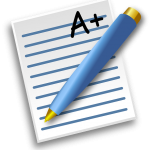Spring 2019
Lab Project and Research Assignment
Instructions and Guidelines
You will be assigned a culture tube containing two bacterial types. Over three lab sessions you will perform several techniques and biochemical tests in order to identify these organisms. Following the completion of these tests and collection and interpretation of your results, write a complete lab report detailing the tests performed, the results, and the most likely organisms you were given. The report should be no less than 5 pages long, not including the cover page, double spaced and using font size 12. Your lab report must contain the following;
- Cover page – Your name, your instructor’s name, your section number, and the title of your project – Unknown number
- Introduction – (Must include citations)
- Background information on microbiology and its importance and contributions.
- What are microorganisms and their importance to everyday life.
- Importance of microbial techniques or test.
- Introduce why the activity was done.
- What are the objectives or aims of the study?
- What is the working hypothesis? etc.
- Materials and Methods –
- Describe each test performed giving the function of the test, what is tested for, the reagent needed (if applicable), and the expected observations and results. DO NOT DESCRIBE THE INDIVIDUAL STEPS.
- Results – Include all relevant tables and pictures. All tables and pictures must have title and or figure legend and a short paragraph summarizing the results presented. Include flow charts depicting how you came up with the identification of your unknown.
- Discussion/Conclusion –
- Discuss and analyze your results. How did the results lead to the identification of your unknown?
- Which results did you use to identify your unknown?
- What problems did you encounter with explanation?
- Give some background information on the organisms you identified. Discuss the ‘big picture’. (must also include citation)
- List of references/Bibliography
Besides assessing microbiology skills and knowledge, this exercise will also assess your ability to use relevant resource material to complete a research project. Therefore, you must include some researched information. Areas where you may include researched information include the introduction, materials and methods and in your discussion. Your final paper will be assessed for the following;
- Your ability to understand and address the scope and objectives of a manageable research topic
- Your ability to identify credible and relevant sources
- Your use of information effectively to accomplish specific purpose
- Your ability to present information in a clear and meaningful way
- Whether you cite sources in an appropriate style. You must use in-text citations.
- Your ability to incorporate ideas of others in an ethical manner; summarizing, paraphrasing and quoting are correct and appropriate
All sources must be properly cited in the, American Psychological Association, APA, the Council of Science Editors scientific style, CSE, or some other accepted format. Whichever the format, the following must be included;
- the authors listed on the publication (or on the chapter if citing a book)
- the title of the paper (or chapter if citing a book),
- the name of the journal (or book)
- editors if a book is cited
- volume number
- complete pagination (first and last page of the work cited)
- year of publication
Here is a site with examples of different ways to cite sources using the APA format. http://www.library.cornell.edu/resrch/citmanage/apa
Important sources such as scientific journals, Bergey’s Manual, medical text books, encyclopedias or other reliable sources must be used in preparation of the paper. The text book should not be used as a source of information. There must be a minimum of six (6) references including no more than two websites, two primary and two secondary sources. Here is a link describing primary and secondary sources, Clearly indicate which of your references are primary and which ones are secondary.
Reliable web sites such as CDC, NIH, or other medically related sites or peer reviewed sites must be cited correctly. Here is an example of how to cite a site;
Landsberger, J. (n.d.). Citing Websites. In Study Guides and Strategies. Retrieved May 13, 2005, from http://www.studygs.net/citation.htm.
I suggest you submit a draft copy of your paper to your instructor for feedback before the final copy is submitted.
Primary and Secondary Sources for Science
In the Sciences, primary sources are documents that provide full description of the original research. For example, a primary source would be a journal article where scientists describe their research on the human immune system. A secondary source would be an article commenting or analyzing the scientists’ research on the human immune system
| Primary Source | Secondary Source | |
| DEFINITIONS | Original materials that have not been filtered through interpretation or evaluation by a second party. | Sources that contain commentary on or a discussion about a primary source. |
| TIMING OF PUBLICATION CYCLE | Primary sources tend to come first in the publication cycle. | Secondary sources tend to come second in the publication cycle. |
| FORMATS–depends on the kind of analysis being conducted. | Conference papers, dissertations, interviews, laboratory notebooks, patents, a study reported in a journal article, a survey reported in a journal article, and technical reports. | Review articles, magazine articles, and books |
| Example: Scientists studying Genetically Modified Foods. | Article in scholarly journal reporting research and methodology. | Articles analyzing and commenting on the results of original research; books doing the same |


